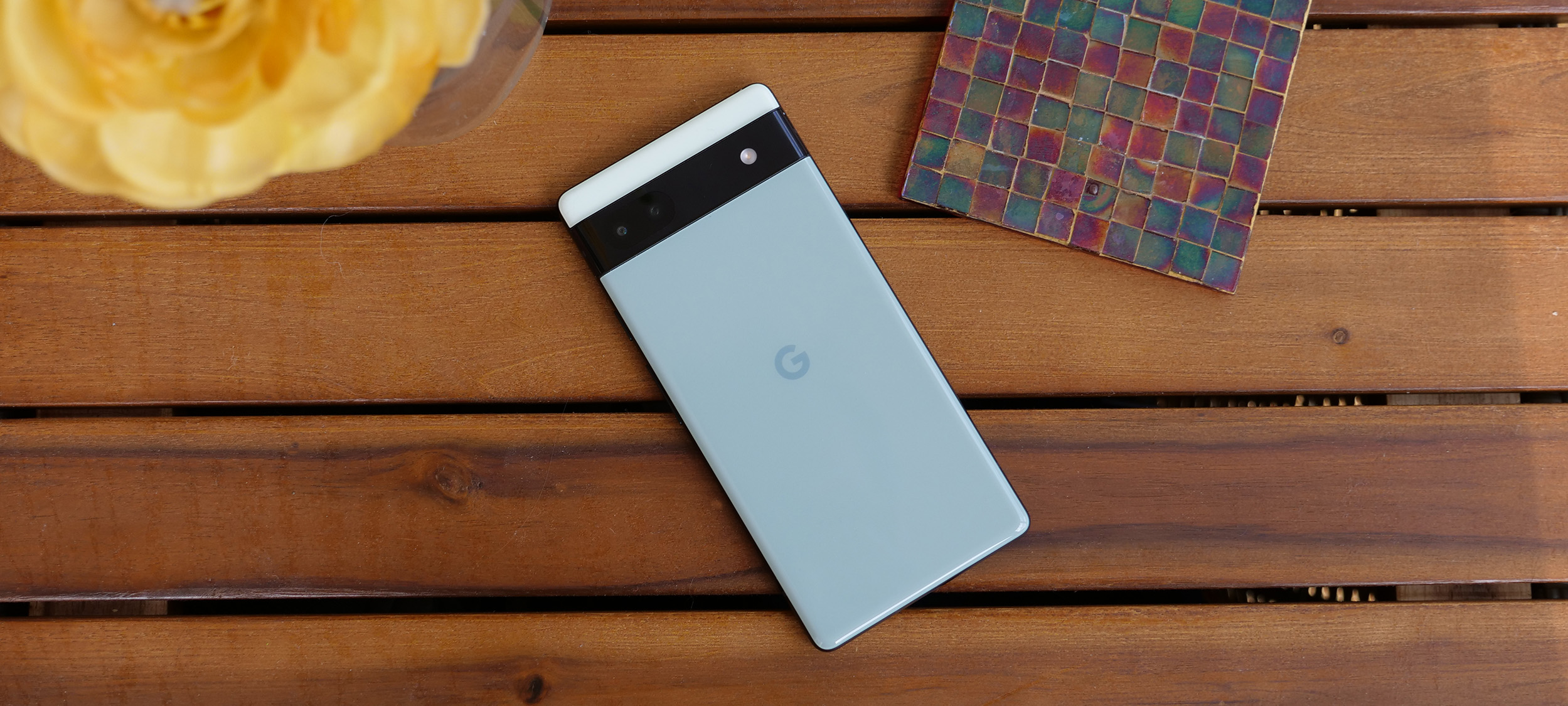Laptop Mag Verdict
The Pixel 6a takes most of what we loved about the Pixel 6 and Pixel 6 Pro and stuffs it into a smaller chassis at an incredibly affordable $450.
Pros
- +
Excellent software support
- +
Unique AI software features
- +
Bright and colorful display
- +
Affordable $449 price
- +
Solid performance
Cons
- -
Older camera sensors
- -
Lacks wireless and true fast charging
- -
60Hz display
Why you can trust Laptop Mag
Price: $449
OS: Android 12
Display: 6.1-inch OLED display (2400 x 1080)
CPU: Google Tensor
RAM: 6GB
Rear cameras: 12.2MP wide (f/1.7), 12MP ultrawide (f/2.2)
Front camera: 8MP (f/2.0)
Storage: 128GB
Battery: 4,410mAh
Size: 5.9 x 2.8 x 0.34 inches
Weight: 6.3 ounces
After announcing the Pixel 6a at Google I/O back in May, the phone is finally here. The smaller and even more affordable Pixel 6a delivers a lot of what we loved about the Pixel 6 and Pixel 6 Pro for just $449.
It uses Google’s same custom Tensor chip from the Pixel 6 and 6 Pro — and that same bold new look. It also benefits from the outstanding software support from Google with five years of security updates. There are, of course, some trade offs to hit its price point with the return of the older Pixel camera sensors and a 60Hz display.
While there are some strong contenders in the sub-$500 phone market, the Pixel 6a makes an excellent case for itself as the heir apparent to the Pixel 5a, the current champ. After over a week with the phone, here’s an in-depth look at Google’s even more affordable take on the Pixel 6.
Pixel 6a price and configurations
The Pixel 6a keeps it simple with a single $449 configuration that includes 128GB of storage paired with 6GB of RAM and a 6.1-inch, OLED display with a 60Hz refresh rate. The same Tensor chip found in the Pixel 6 and Pixel 6 Pro is powering the Pixel 6a, so you aren’t losing anything there by going with the cheapest Pixel.
The only choice a Pixel 6a buyer is faced with is the color: Sage, Chalk, or Charcoal. The Pixel 6a is available for pre-order right now from Google, major carriers, Best Buy, and Amazon. Pre-orders should arrive on July 28, which is when the phone will be available in stores.
Notably, for readers outside of the U.S., the Pixel 6a is available in 11 additional countries on launch day:
It will also be available in India before the end of 2022. After the Pixel 5a was limited to a release in the U.S. and Japan, this is a welcome change for affordable Pixel fans worldwide.
Sign up to receive The Snapshot, a free special dispatch from Laptop Mag, in your inbox.
Pixel 6a design

For good and for ill, the Pixel 6a mirrors the massive redesign that Google undertook with the Pixel 6. The prominent rear camera array runs the width of the phone and makes the Pixel 6a unmistakably a Google phone. The two-tone color split above and below the camera array adds a dash of flair to the back of the phone. The front and sides could be mistaken for any mid-tier Android phone with a hole-punch camera centered at the top of the flat display and gently rounded edges that make the phone comfortable to hold.
While the Pixel 6 and Pixel 6 Pro were generally well-received, one common complaint was that they were too large at 6.4 and 6.7 inches. The Pixel 6a drops back down to a more pocket-friendly, 6.1-inch display that may win back some Pixel fans that stuck with a Pixel 4 or 5 for the smaller form factor. While large displays undeniably have their advantages, I have really come to appreciate this size with the iPhone 13 Pro and Samsung Galaxy S22.
At 5.9 x 2.8 x 0.34 inches and 6.3 ounces, the Pixel 6a falls squarely in between some of its biggest budget competition. The iPhone SE 2022 (5.2 x 2.5 x 0.3 inches, 5 ounces) is considerably smaller, but that is to be expected with its tiny 4.7-inch display. On the opposite end, you have the Samsung Galaxy A53 (6.3 x 2.94 x 0.32 inches, 6.7 ounces) with a much larger 6.5-inch display. The Galaxy A53 is a better reflection of the average phone size in this price range, so it’ll be interesting to see how Google fares with a smaller option.
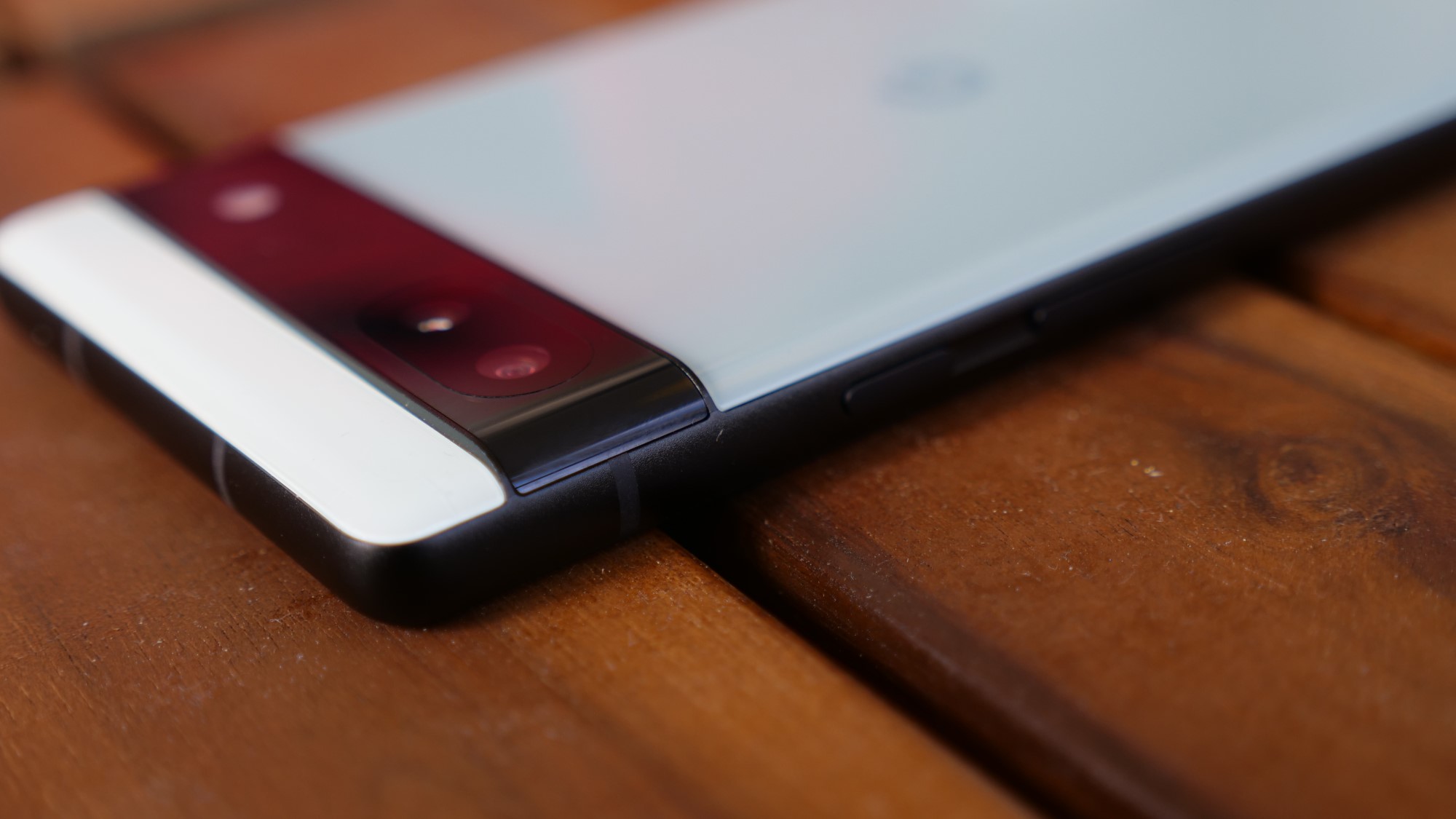
Google has done away with its whimsical naming conventions for the Pixel 6a, no “Sorta Seafoam” or “Kinda Coral” this time around. It’s straight-to-business with Sage, Chalk, or Charcoal, which translates to dark green, white, and black. I reviewed the Sage model and it reminded me of how much I loved the unique finish on the Pixel 5. The color is similar and the 6a gets that fun splash of light green above the camera array. But the “3D thermoformed composite back” (catchy name) of the 6a just doesn’t match up with the soft-touch “bio-resin” of the Pixel 5.
The Pixel 6a offers IP67 dust and water resistance certification, so it will survive being dunked for a few minutes in around six feet of water. Corning Gorilla Glass 3 protects the display. While the composite back will likely hold up better to drops than Gorilla Glass, you can expect to see scratching if you go caseless. What you won’t see on that back are fingerprints. From the right angle they are there, but they are rarely visible —a quick wipe with your hand makes them vanish completely.

Looking around the outside of the Pixel 6a, all three color options feature black sides and black bezels. On the right side, you have the power button and volume rocker. On the bottom, there’s a USB-C charging port. On the left side, you’ll find the Nano SIM slot.
I loved the new design on the Pixel 6 and Pixel 6 Pro, so it was a given that the Pixel 6a would scratch that same itch. One advantage, although it also has a downside that I’ll address later, is that the camera array is considerably thinner on the Pixel 6a, which gives the phone improved balance over its larger siblings.
Pixel 6a display
The Pixel 6a features a 6.1-inch, FHD+ (2400 x 1080 pixel) OLED display. It includes HDR support, a high brightness mode, over a million-to-one contrast ratio, and full 24-bit depth for 16 million colors. The trade-off that you are making versus the Pixel 6 and Pixel 6 Pro is that those phones feature Google’s “Smooth display” with a 90Hz and 120Hz refresh rate, respectively.
It would have been nice to see Google, at the very least, bring its 90Hz refresh rate to the Pixel 6a. The Galaxy A53 delivers a 120Hz display at the same price, but Google needs to leave some differentiators for the Pixel 6 at $599. Side by side, there is no mistaking a 60Hz display for a 120Hz display.
I pulled up the most recent trailer for Bullet Train to get a clearer picture of what the Pixel 6a display can do. It reproduced the colorful, neon-drenched scenes of the Brad Pitt and Sandra Bullock vehicle excellently with sharp detail. A scene with Pitt contemplating how to get off the train offers a great look at the 6a’s capabilities, with a wash of bright color in a bar and poster in the background shifting into the shadowed foreground while a spill of light hitting Pitt gives you minute details on the harried protagonist.
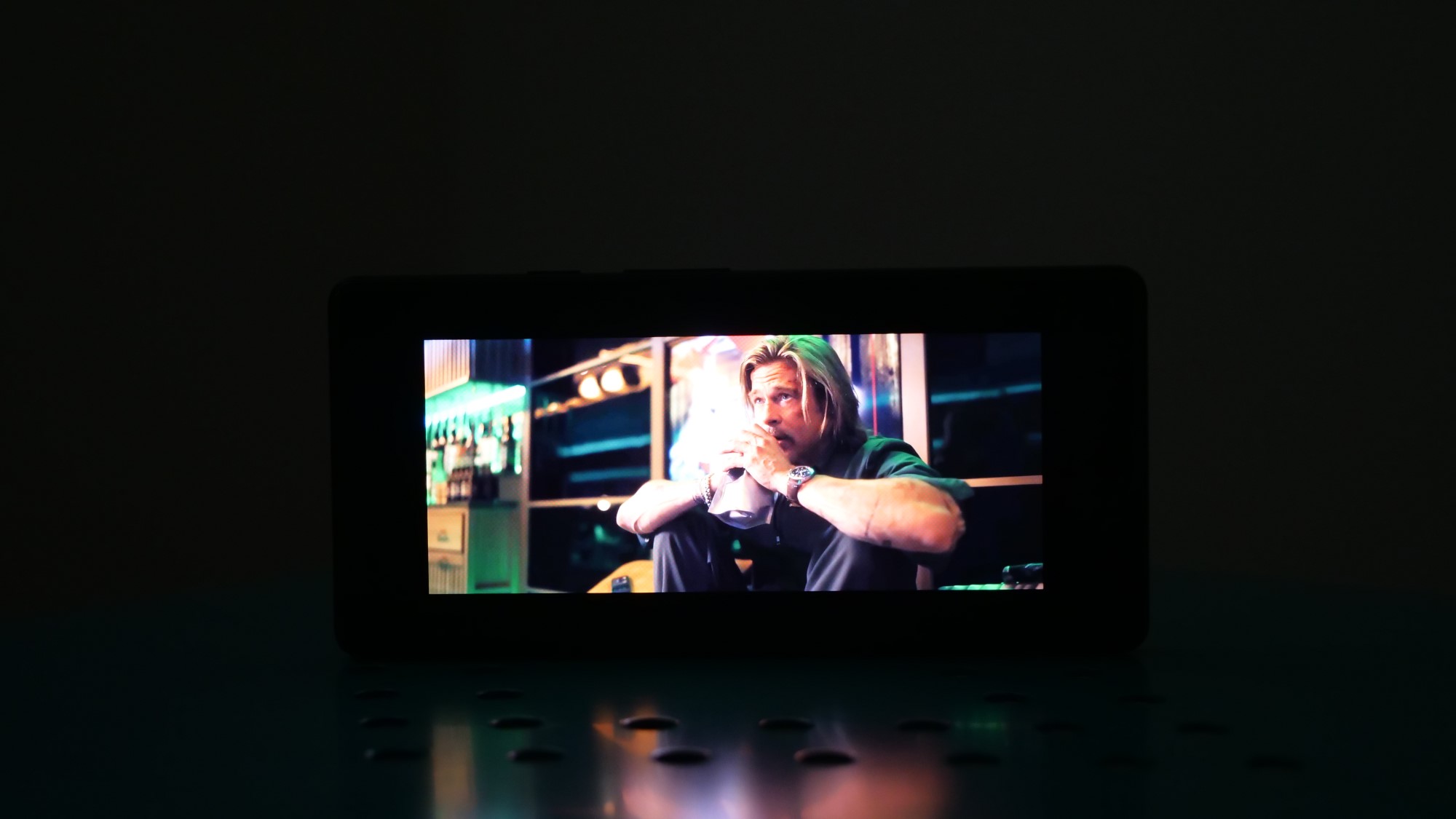
Our lab testing was pretty glowing for the Pixel 6a with the phone reproducing 78.7% of the DCI-P3 color gamut in its Natural color setting. The iPhone SE (81%) and Galaxy A53 (86.8%) both topped it, but the Android phones have a second gear when it comes to color gamut. The Pixel 6a bumps up to 93% in its adaptive setting while the Galaxy A53 delivers an absolute cascade of copious colors to your corneas at 144.6% in its Vivid setting.
The Delta-E color accuracy test results (lower is better) for the Pixel 6a are among the best we’ve seen at 0.2 in its Natural setting. That narrowly defeats the iPhone SE (0.21), but both handily outperform the Galaxy A53 (0.31). Again, the Android phones have that second gear, which, in this case, costs them accuracy. Consequently, the Pixel 6a (0.25) falls behind the iPhone SE and the Galaxy A53 (0.32) drops further when using their more colorful settings.
Google didn’t sacrifice brightness, with the Pixel 6a display delivering an average peak of 776 nits. That easily eclipses the iPhone SE 2022 (550 nits) and outshines the Galaxy A53 (693).
Pixel 6a audio
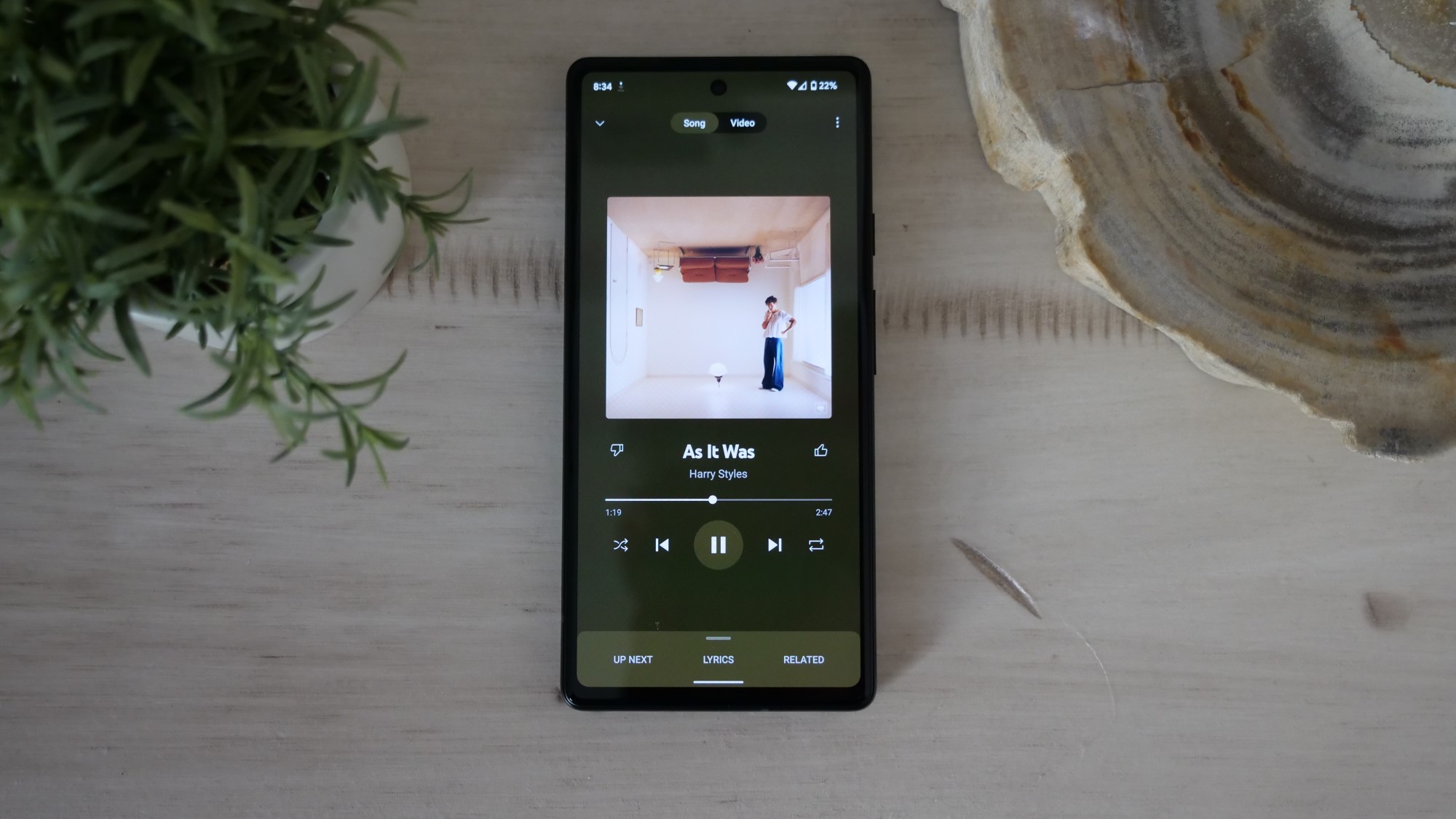
The Pixel 6a has a pair of stereo speakers onboard and they do an adequate job for watching videos or a little background music, although I’d certainly recommend turning to a pair of wireless headphones to properly enjoy the latter. Volume isn’t an issue, as I was able to easily fill my 12 x 18 foot listening space with the Pixel 6a’s speakers. There isn’t much depth or bass, but that’s pretty common among phone speakers.
I listened to “As It Was” by Harry Styles, and the soft and melancholy lyrics would start to distort if I pushed the volume too high. Keeping it to about 70% was plenty for listening to a few songs while I worked. The speakers were more than capable of reproducing the 80s synth hook and drum machine backing the vocals.
Pixel 6a performance
Google's Tensor chip was a bit of a mystery when it launched last year as it was Google’s first attempt at a custom SoC. While it isn’t a performance beast like Apple’s Bionic processor, the gamble appears to have paid off with the Pixel 6 and Pixel 6 Pro, offering far superior performance to the previous couple of generations of Pixels.
The Pixel 6a drops to 6GB of RAM from 8GB in the Pixel 6, but features an identical Tensor chipset. Google appears to have improved its software tuning as it produced even better results than either the Pixel 6 or Pixel 6 Pro at launch.
My typical review gauntlet for phones includes loading a few dozen Google Chrome tabs, running a Netflix video in the background, and then swapping between several other apps including Twitter, YouTube Music, and Gmail. The Pixel 6a had no issues with this workload and I could quickly switch between tabs and apps without any stuttering in the operating system or video.
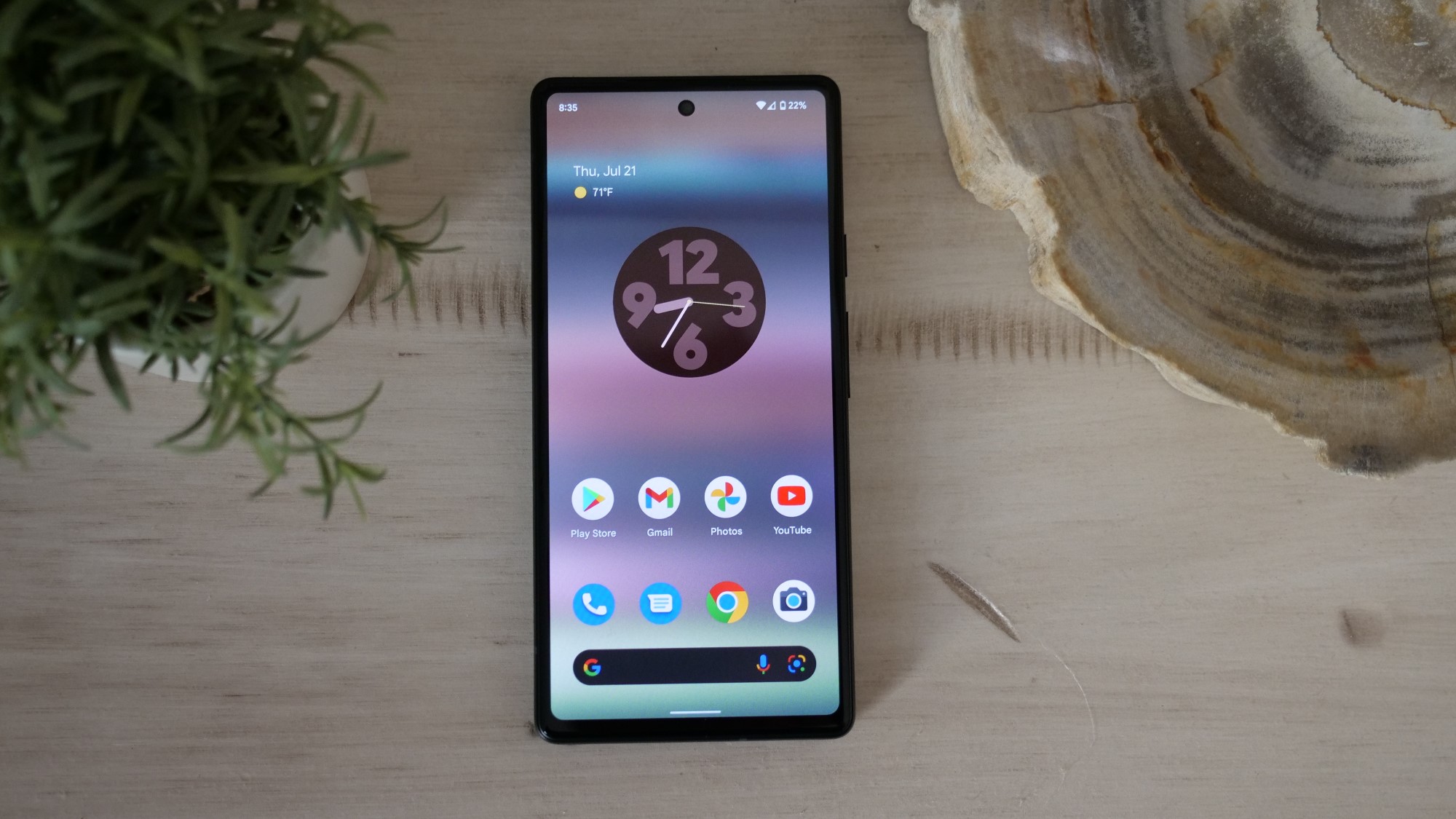
I installed Call of Duty: Mobile and the Pixel 6a was game for the challenge. I played a couple of rounds in Vikendi and I never encountered any lag. Plus, the bright 1080p display reproduced the snowbound map clearly. I maxed out the graphics, and of course, the 6a has the advantage of only trying to play games at 60Hz, so that no doubt helped to ensure my stutter-free experience.
If you like benchmarks, we’ve got you there, too, and the Pixel 6a managed to surprise by outperforming its pricier siblings. In Geekbench 5.4, the Pixel 6a managed a multi-core score of 2,918. Not a crushing victory over 2,696 for the Pixel 6, but a solid improvement. Now the iPhone SE 2022 (4,482) may wipe the smile off the Pixel 6a’s screen, but the Galaxy A53 (1,888) will put a spring back in the Pixel’s step.
Just as we saw with the previous Tensor-powered phones, the Pixel 6a is far more competitive in graphics and real-world benchmarking. In the Wild Life Unlimited graphics test, the Pixel 6a managed 42 frames per second, obliterating the Galaxy A53 (14 fps) and nipping at the heels of the iPhone SE (50 fps).
In our Adobe Premiere Rush test that has the phone convert a 4K video to 1080p, the Pixel 6a finished in 48 seconds, a mere second behind the Pixel 6. Once again, the Galaxy A53 (1:58) finished in a distant third place, while the iPhone SE (00:27) channeled its inner Quicksilver and left the others standing still.
While it admittedly doesn’t come close to the iPhone SE in most regards, the Pixel 6a is a standout among many of its sub-$500 peers when it comes to performance.
Pixel 6a battery life and charging
Battery life had been a perennial challenge for the Pixel line, but while the tests say differently, that appeared to come to an end with the Pixel 6 and Pixel 6 Pro. There was no secret sauce, Google just finally put larger batteries in these phones and it has done that again with a solid 4,410mAh battery in the Pixel 6a. Unfortunately, it still suffered the same fate as its siblings with a mere 6 hours and 30 minutes in our lab rundown test.
My day-to-day usage tells a very different story, however, as I never killed it during a normal day of usage. Only pressing to burn the battery with multiple hours of video playback, gaming, and photo and video work did the trick. While I think Google’s “over 24-hours of battery life” is going to be a reach for some users, I suspect it will be accurate for the average Pixel 6a buyer. In case of emergency, you always have “Extreme Battery Saver mode” which disables 5G and a host of other power-hungry features in the interest of keeping your phone alive for up to 72 hours.
My typical full review day with the phone started with taking it off the charger around 7:30 a.m. Next, I ran it through two hours of Netflix and/or YouTube streaming over Wi-Fi, web browsing, social media sifting, 30-minute gaming, and capturing photos and videos. After over a week with the phone, I’ve never seen it dip below 20% in a day with this usage.

Again, our Laptop Mag Battery test was a rough outing for the Pixel 6a. Across three separate tests, the phone managed an average of 6 hours and 30 minutes of continuous web browsing over 5G with the screen at 150 nits of brightness. Despite a weak score itself, the iPhone SE 2022 (7:38) still outlasted the Pixel 6a in the test, while the Galaxy A53 easily outlasted them, whether its screen was set to 120Hz (9:49) or at the same 60Hz (10:39) as its rivals.
I’ve spent time with the Pixel 6 and Pixel 6 Pro as my primary device over the months since my initial reviews; I have never encountered the battery life issues I would expect with a phone that performed as poorly as either of them did on our battery life test. In our Pixel 6 review revisited, our contributor Shubham Agarwal reported similar findings, stating that he typically sees a day and a half — even with heavy use.
Charging also remains behind its pricier siblings with a max 18W fast charging. As with most other phones these days, it also doesn’t include a charger in the box, so you’ll want to consider a 30-65W fast charger, if you don’t already have one, just to future-proof yourself. The Pixel 6a also lacks support for Qi wireless charging, which hurts more than the lack of true fast charging for me as I’ve grown accustomed to dropping my phones on one of the Qi chargers around my house for easy top ups without having to plug it in.
Based on my experience with the phone and its siblings, I don’t think the battery life is anything to worry about with the Pixel 6a. But the step down when it comes to charging options is a disappointment and worth considering if you are deciding between it and the Pixel 6.
Pixel 6a cameras
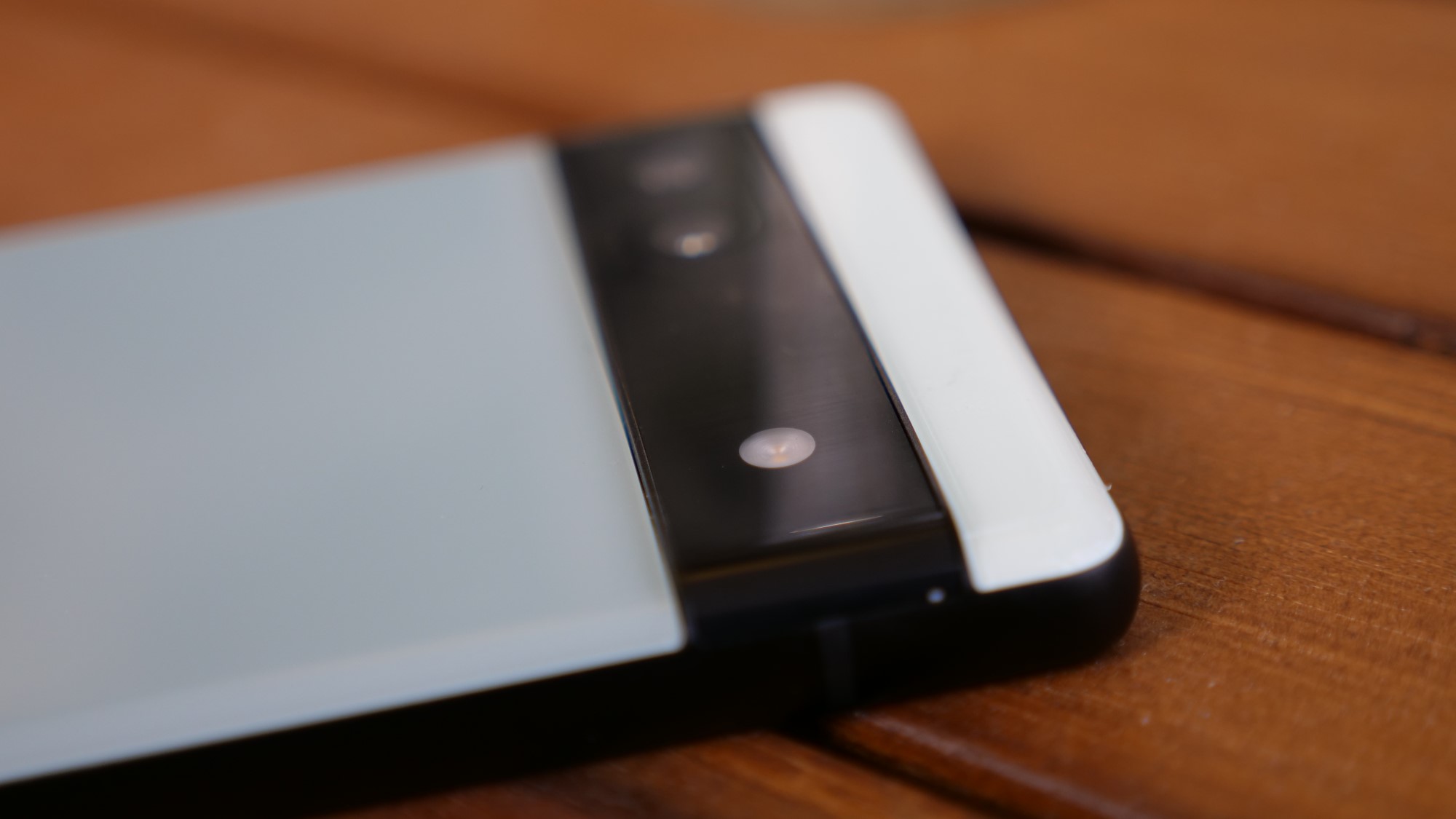
For many users, the camera is going to be the biggest sacrifice in going with the Pixel 6a over the Pixel 6 as Google returned to its old standby camera sensors that it has used since the Pixel 3. This means that on the back, you have a 12.2MP wide-angle at f/1.7 and a 12MP ultrawide at f/2.2. Flipping around to the front, you get an 8MP at f/2.0. Google remains the leader in computational photography, so it continues to squeeze some fantastic results out of this hardware, but it simply doesn’t compare to the Pixel 6’s updated camera hardware.
In daylight shots, I didn’t notice a significant fall off. The colors and detail in the photos are still excellent from both the wide and ultrawide lenses. However, if low-light performance is important to you, then you should consider saving up for the Pixel 6 instead. While the primary wide-angle is still quite good, the smaller sensor simply can’t capture as much light — and that also results in slower processing times as it tries to artificially boost that light.
Wideangle camera
I’ve now spent years with this 12.2MP wide-angle camera in the Pixel 6a, and while it was once able to hold its own against top-tier flagships, that time is gone. However, since this is a $449 phone, that is not really an apt comparison. The Pixel 6a still holds its own against anything in this price range where the camera is often an afterthought.
The shot of a bull below is a great showcase for this sensor. The subtle shifting color of its hide is captured perfectly, and despite punching in slightly on the shot, the amount of detail in the image is still remarkable with the wrinkles on its neck,veins along its side, and its hind leg all clearly visible. The next shot in the series gives you a look at Night Sight from this sensor, which overall looks quite good with a noise-free sky and a solid amount of detail kept in the fountain and brickwork in the background.

Pixel 6a wide-angle camera

Pixel 6a wide-angle camera

Pixel 6a wide-angle camera
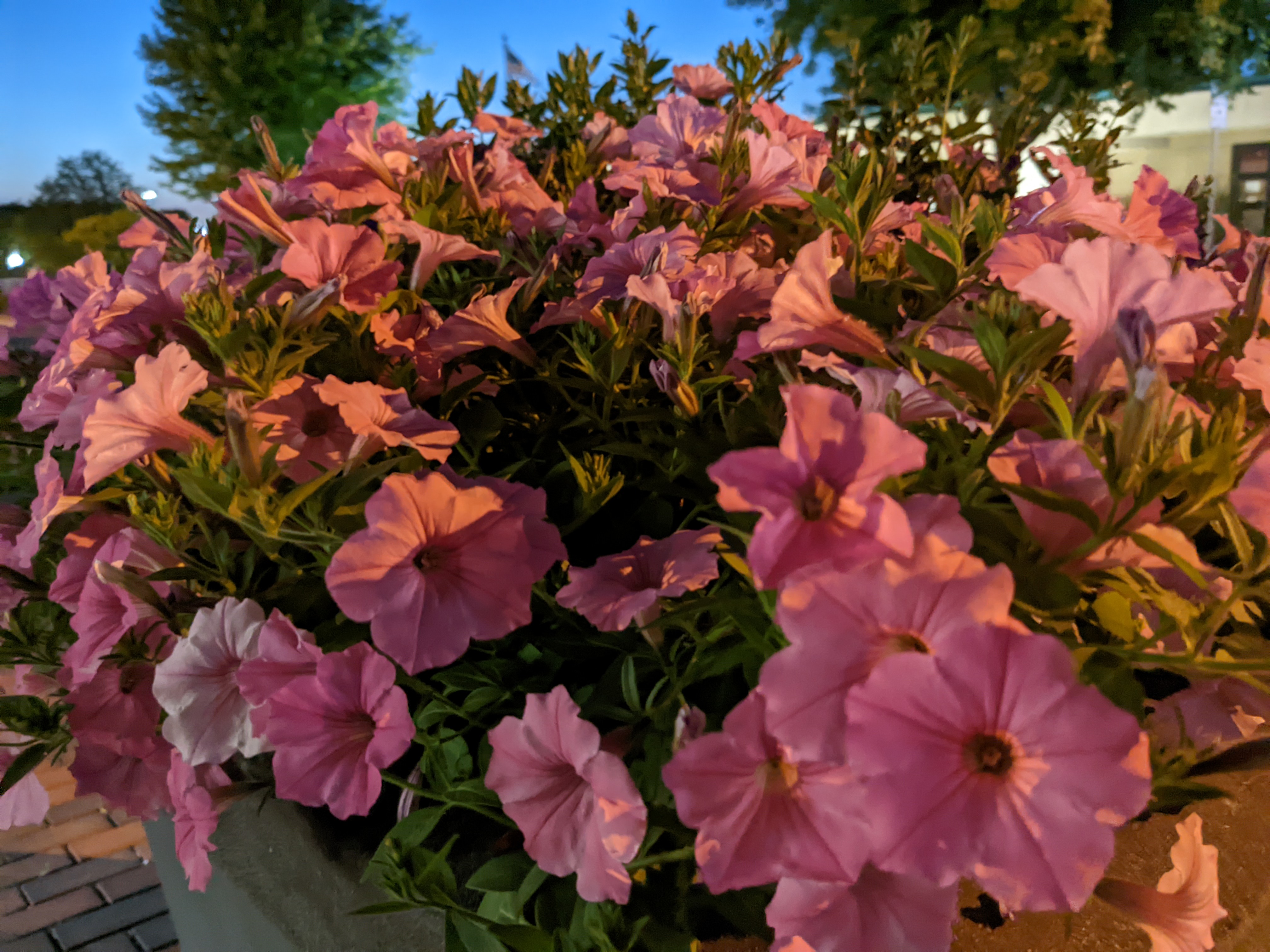
Pixel 6a wide-angle camera

Pixel 6a wide-angle camera
Ultrawide camera
Similarly, the 12MP ultra-wide sensor performs well in daylight with the sample shot of a 150-year-old farmhouse below retaining excellent detail in the shingles and the brickwork, all while adeptly handling the darker lower section of the image without blowing out the sky. Night Sight is a different story on the ultrawide. Even after a couple of attempts, the slightly blurry second image below was the best I could manage.

Pixel 6a ultra-wide camera




Front-facing camera
Your selfie game isn’t going to be at iPhone 13 levels, but the Pixel 6a doesn’t disappoint with its front-facing camera. Particularly, if you employ the Portrait mode, the level of detail and the strong bokeh effect that Google has mastered over the years should leave you pleased. My sample front-facing shot served as a nice reminder that I need to shave with my stubble in clear detail and the algorithm managed to detect my unruly hair quite well and avoided blending it into the blurred background.

The Pixel 6a also benefits from some of Google’s unique new camera tricks like Magic Eraser. It automatically detects potentially distracting elements in the background of your photos and lets you simply tap to eliminate them. It works astoundingly well and makes photobombing an obsolete problem for Pixel owners. The other notable camera feature is Real Tone, which isn’t something that needs to be turned on or activated, but is simply a part of Google’s camera algorithm that improves skin-tone rendering, thanks to extensive training on expert images of a wide variety of people.
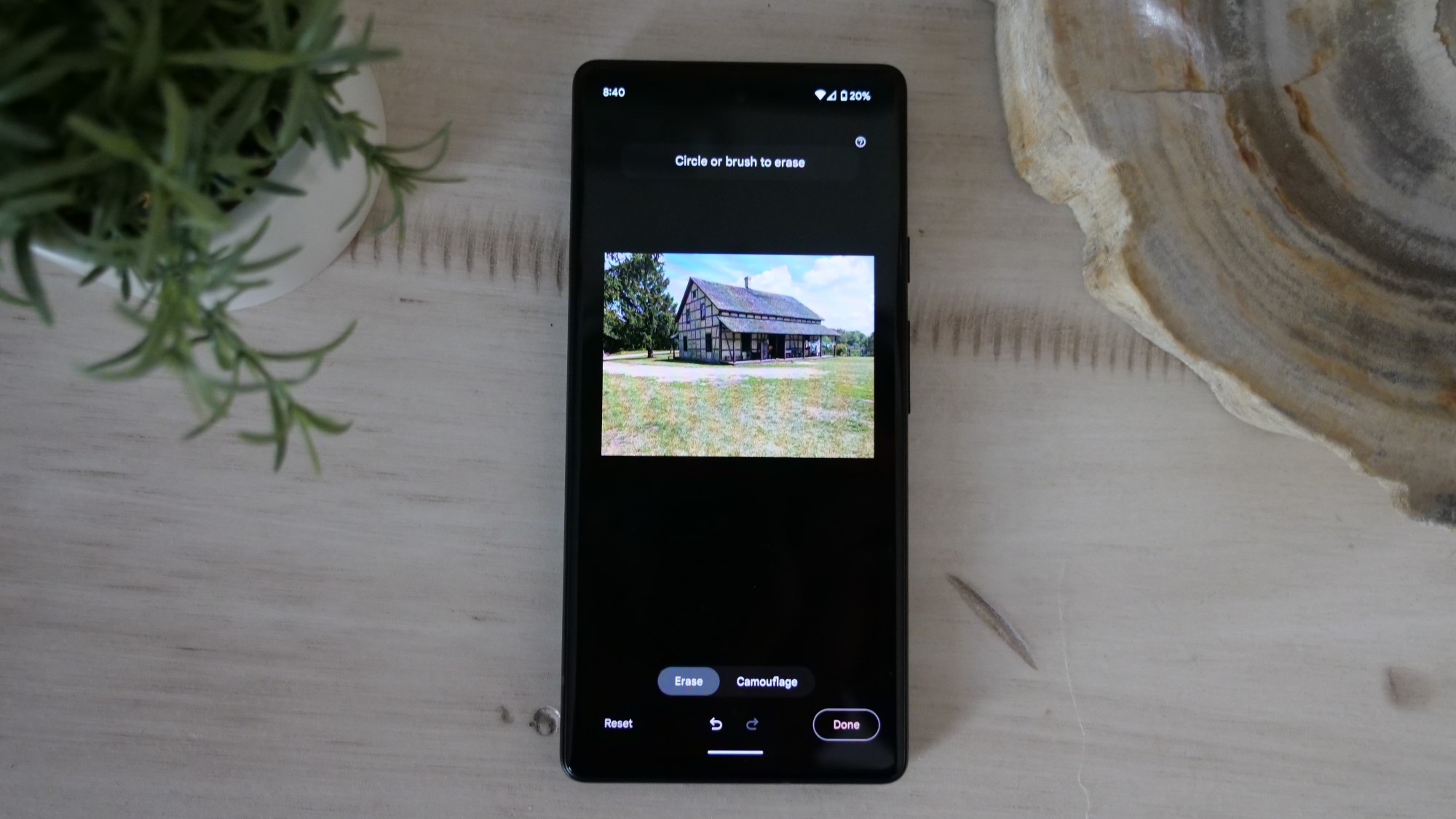
Pixel 6a software
The Pixel 6a runs Google’s slightly modified version of Android 12. While Android 13 is near on the horizon now, and the Pixel 6a will be among the first to get it, I’m still enchanted by all of the little user interface enhancements Google delivered with Material You. The Pixel also benefits from a number of exclusive features Google continually adds with new “feature drops.”
The Pixel 6a makes calling businesses a little less painful with its Wait Times, Direct my Call and Hold for Me features. Respectively, these show you optimal times to call a particular business, transcribe automated menu options for you, and notify you when someone picks up your call after putting you on hold.
Assistant voice typing remains second to none. Just say, “Hey Google, type” when you are in a messaging app, and it will let you dictate and send messages, including precise cursor movement, spelling out unusual words or names, and emoji.
Google’s At a Glance feature is becoming almost eerily prescient in its ability to surface contextually relevant information on your home screen and lock screen. This includes weather, local alerts, travel details that it pulls from your email, appointments, and traffic to relevant destinations. This also includes settings details like battery levels or a reminder that your flashlight is on.
While these features are all great, the biggest advantage that Pixel 6a offers over most phones in this price range is the five years of security updates and three years of major OS updates. The iPhone remains the gold standard in this regard with roughly six years of support for even the lowly iPhone SE, but on the Android side, Google is second to none.
Bottom Line
At $449, the relatively small Pixel 6a has the potential to be a giant in the mid-tier phone market. Unlike the iPhone SE 2022, it not only has the SoC of its flagship siblings, but it actually looks like them too and offers a pair of rear facing cameras like most modern phones. Samsung’s Galaxy A53 has a number of advantages on paper, but the performance gap tips significantly in the 6a’s favor.
The biggest challenge for the Pixel 6a is likely going to be the Pixel 6. I called that phone the “best Android value ever” and I stick by that following the release of the Pixel 6a. Google did an excellent job of bringing a lot of the Pixel 6 DNA into the 6a, but the upgraded cameras, wireless and fast charging, and higher refresh rate display of the Pixel 6 are worth the price difference. And that’s ignoring the fact that you can typically find the Pixel 6 for $549 — and we’ve even seen it dip lower. However, the Pixel 7 and Pixel 7 Pro are coming this fall, so this should be a short-lived problem for the 6a if Google hasn’t overstocked the Pixel 6.
The Pixel 6a is one of the best cheap phones out there. While I find the Pixel 6 upgrades to be worth it, if you don’t particularly care about the camera and prefer a more pocketable phone, then the 6a is nothing but upside for you. If you need to spend under $500 for a phone and aren’t looking to get into the Apple ecosystem, the Pixel 6a is easily one of the best choices you could make.
Sean Riley has been covering tech professionally for over a decade now. Most of that time was as a freelancer covering varied topics including phones, wearables, tablets, smart home devices, laptops, AR, VR, mobile payments, fintech, and more. Sean is the resident mobile expert at Laptop Mag, specializing in phones and wearables, you'll find plenty of news, reviews, how-to, and opinion pieces on these subjects from him here. But Laptop Mag has also proven a perfect fit for that broad range of interests with reviews and news on the latest laptops, VR games, and computer accessories along with coverage on everything from NFTs to cybersecurity and more.
